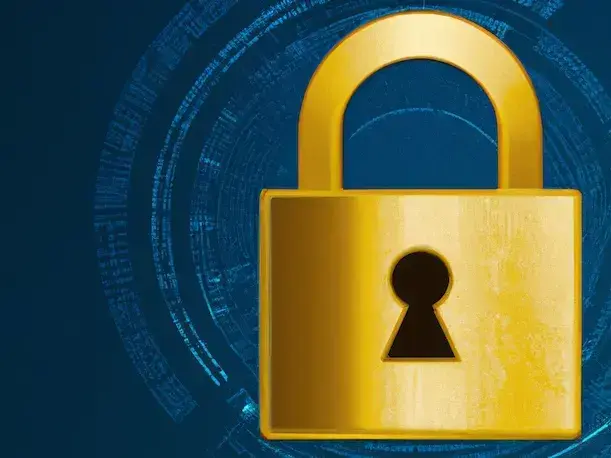
Top AI-powered products from both fast-growing startups and industry giants — across segments including security operations, data security and email protection — made our mid-year list.

Hot Products To Know
With organizations increasingly relying on unified, AI-powered cybersecurity platforms, top industry vendors have been delivering major advancements in 2025 so far with the launch of new cybersecurity tools and products. Both cybersecurity industry giants and fast-growing startups have released products during the first half of the year that aim to provide massive improvements to security outcomes — with a focus on utilizing AI/ML, GenAI and agentic capabilities to gain an edge.
[Related: The 20 Hottest AI Cybersecurity Companies: The 2025 CRN AI 100]
For solution and service providers such as West Seneca, N.Y.-based CyFlare, bringing on new security products is about more than just offering an improved picture of threats facing a customer, according to CyFlare founder and CEO Joe Morin. “It’s really about, when you have it, did it reduce my risk? And can you pull the data and make compliance reporting easier?” Morin told CRN. “When we think about a product, it’s more about the outcome it’s driving — and what we are going to do with it.”
For CRN’s mid-year coverage, we’ve selected 10 cybersecurity tools and products that have been on our radar in 2025 so far thanks to their combination of technical advancements and opportunities for channel partners. To better understand the products, CRN has recently spoken with CEOs and other C-level executives at each of the companies including Zscaler, CrowdStrike, Palo Alto Networks, SentinelOne, Check Point and Wiz.
Key product categories for these major vendors include security operations technologies, data security, asset exposure management and email protection — as well as security for enabling usage of GenAI and agentic technology itself.
What follows (in alphabetical order) are 10 of the hottest cybersecurity tools and products of 2025 so far.

1Password Enterprise Password Manager – MSP Edition
1Password unveiled an MSP version of its Enterprise Password Manager as the latest move in the company’s expanded channel push. “MSPs are a very, very important part of our future,” 1Password Co-CEO David Faugno said in an interview with CRN. “We’ve spent a lot of [time] on making sure we’re getting it right for them. We’ve done all the hard work on multitenancy, on the password manager platform.” The new 1Password Enterprise Password Manager – MSP Edition comes as the vendor continues to make progress with bringing its platform — initially focused on consumers — to businesses, which now contribute 75 percent of the vendor’s revenue. And as part of the expansion initiative with businesses, MSPs and other channel partners are “going to be front and center of the way we go to market from here forward,” Faugno said.

Check Point Quantum Force Branch Office Security Gateways
Check Point Software Technologies debuted its latest branch firewalls, the Quantum Force Branch Office Security Gateways, which aim to provide massive AI-powered improvements to threat prevention. The gateways offer “enterprise-level firewall security” featuring up to a 4X improvement in threat prevention performance compared to prior models, according to the company. Ultimately, Check Point’s goal with the new Quantum Force Security Gateways and all of its other products is to “create an architecture which is flexible — meaning that any node in the mesh can connect to any other node at any given time, and consume security based on persona/identity, intent, geography and location,” Check Point CEO Nadav Zafrir said in an interview with CRN. “We believe that our architecture, which allows a hybrid approach to the hybrid mesh, gives better security — because every node has the ability to not only see everything else, but also to protect itself. [We can offer a] better user experience in terms especially in terms of speed. It’s just a different architecture.”

CrowdStrike Charlotte AI Expansion
CrowdStrike introduced two new agentic AI tools for its Charlotte AI platform, with the launch of Charlotte AI Agentic Response and Charlotte AI Agentic Workflows. Charlotte AI Agentic Response can boost security operations productivity through providing automated answers to questions that an analyst often would pose during an investigation—leading to faster analysis of root causes, mapping of lateral movement and guidance for the analyst’s next actions, CrowdStrike said. Meanwhile, Charlotte AI Agentic Workflows provides drag-and-drop workflows—leveraging LLMs—that provide analysts with a way to easily embed AI reasoning within automated playbooks in Falcon Fusion SOAR, according to the company.
“When we created Charlotte, it was really to be an agentic technology — before agentic AI had a name,” CrowdStrike co-founder and CEO George Kurtz said in an interview with CRN. “We were saying, ‘Hey, you have to go beyond just chatbots. You have to wire it into workflows. You have to be able to make decisions.’” Ultimately, “we can see Charlotte being an AI agent that autonomously responds to all these activities and takes action on behalf of a customer without any interaction,” Kurtz said.

Cyera Omni DLP
A top player in the red-hot space of data security posture management (DSPM), Cyera launched its biggest expansion yet into offering data loss prevention (DLP). Cyera debuted its Omni DLP offering that provides unified, adaptive data security across all environments and tools. The platform brings together Cyera’s DSPM technology with real-time DLP analysis via its acquisition last year of Trail Security. Crucially, Omni DLP can integrate with an organization’s existing security systems including email, endpoint protection, and network DLP as a way to provide enhanced security control, Cyera co-founder and CEO Yotam Segev said in an interview with CRN. Then, by leveraging AI and advanced data classification capabilities, the tool can identify and manage incoming and outgoing data accurately, he said. “The power of that is incredible,” Segev said.

Netskope One DLP On Demand
Netskope rolled out its newest capability in DLP (data loss prevention) with the launch of Netskope One DLP On Demand, which brings a range of key updates including enablement for additional data protection integrations as well as on-premises support. The product debut also means that Netskope’s offering for DSPM (data security posture management) now features Netskope One DLP capabilities, the company said. The launch comes as Netskope continues to find strong demand from customers for its security and data protection capabilities, which can help substantially to “modernize everything” that customers will need to take full advantage of GenAI, SaaS and the cloud, Netskope CEO Sanjay Beri said in interview with CRN. In effect, the cloud and AI push is “ripping apart the entire architecture of companies’ networks and the billions they’ve spent on security,” Beri said. “That’s why I think a lot of people have realized, ‘We’ve got to [modernize].’”

Orca Security AI-SPM Updates
Orca Security unveiled enhancements to its capabilities in AI security posture management (AI-SPM) aimed at further boosting visibility into usage of large language models, GenAI-powered applications and other AI technologies. The updates include improved capabilities for detecting the presence of sensitive data within AI training models as well as detections for data poisoning risks, the company said. Ultimately, AI-SPM in a nutshell is about “providing you visibility into what [AI] technologies are being used and what the risk is around these technologies,” Orca Security co-founder and CEO Gil Geron said in an interview with CRN. “When it comes to AI-SPM, we provide you the visibility of, ‘Which technologies are being leveraged? Where are they being leveraged—which environments? Who’s been leveraging them?’”

Palo Alto Networks Cortex XSIAM 3.0
Palo Alto Networks debuted the next version of its XSIAM (extended security intelligence and automation management) platform, which aims to offer an AI-powered alternative to traditional SIEM. Major updates in Cortex XSIAM 3.0 include the introduction of advanced email security, with capabilities for detecting sophisticated phishing and other email-based threats—including those enhanced using LLMs. The company is bringing a combination of “using AI to analyze email and multiple data sources stitched together,” Palo Alto Networks Chief Product Officer Lee Klarich said in an interview with CRN. “We think [that] is what is required going forward to really secure email.” Other key introductions for XSIAM 3.0 announced by Palo Alto Networks include Cortex Exposure Management, which can “cut vulnerability noise by up to 99 percent” using enhanced prioritization along with automated remediation, the company said. Key capabilities include discovery of risks across network and cloud environments as well as endpoints and third-party sources, according to the vendor.

SentinelOne Purple AI Athena
SentinelOne unveiled major enhancements to its AI-powered security capabilities with the debut of its next version of its Purple AI technology. The new release, Purple AI Athena, includes agentic AI functionality that aims to mirror security reasoning and orchestration of experienced security operations analysts. Key capabilities include the execution of complete investigations into suspicious activity spanning multiple sources as well as orchestration of multiple steps in responses and rapid threat remediation. Notably, Athena “detaches and decouples AI from the need of the data platform and the other dependencies,” SentinelOne co-founder and CEO Tomer Weingarten said in an interview with CRN. While other vendors require a “long list of prerequisites” before deploying AI is possible, “I think what we have done with Athena is to say, ‘Look, security and AI should be everywhere, and it should be easy—and you should just, [with] one click, connect to your entire security ecosystem,” Weingarten said.

Wiz Model Context Protocol (MCP) Server
Wiz debuted its Model Context Protocol (MCP) Server, which aims to help enable the usage of agentic capabilities for security operations. Key capabilities include connecting security data sources via a centralized system — for a simplified view of security posture — as well as rapid cloud visibility and improved intelligence for security investigations, according to the company. The arrival of agents is likely to be a far more substantial shift for cybersecurity than LLMs have been, according to Ami Luttwak, co-founder and CTO of Wiz. “Implementing native language interfaces is nice, but it’s not revolutionary,” Luttwak said in an interview with CRN. “Right now agents feels like it’s a much bigger revolution, because it can impact your team.” Security vendors and professionals also do not have the luxury of waiting too long before working to ensure that the new systems related to AI and agentic are themselves secure, he said. “Now everything moves faster, so we have to move faster in security,” Luttwak said. “We can’t wait five years.”

Zscaler Asset Exposure Management
Zscaler unveiled a new offering for improved management and reduction in risk for crucial assets. Zscaler Asset Exposure Management leverages the company’s 2024 acquisition of security data fabric provider Avalor and marks a major step in the company’s expansion into providing security operations (SecOps) technology, the company said. SecOps is the largest new segment, beyond Zscaler’s core area of zero-trust secure access, that the company has pursued since its launch in 2008, Zscaler Founder and CEO Jay Chaudhry said in an interview with CRN. “I often say, we only have had one North Star since the inception of the company,” he said. “This is the second North Star.” Zscaler’s goals in SecOps include delivering dramatic improvements to exposure and threat management while eliminating the need for building costly data lakes, according to Chaudhry. Exposure management entails “looking at the risk overall, your external attack surface, your asset risk, your vulnerability management risk,” he said. “That feeds to threat management and vice versa.”




